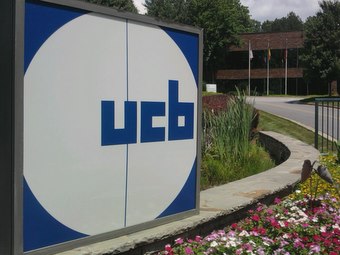 The goal is true innovation – breakthrough new products, services and solutions – that create tomorrow’s growth engines. But most companies are stuck in traditional development: line extensions, modifications and improvements, which won’t generate the desired sales and profits. InnovationManagement asked Dr Robert Cooper about the importance of innovation.
The goal is true innovation – breakthrough new products, services and solutions – that create tomorrow’s growth engines. But most companies are stuck in traditional development: line extensions, modifications and improvements, which won’t generate the desired sales and profits. InnovationManagement asked Dr Robert Cooper about the importance of innovation.
Everybody is talking about innovation and how important it is. Do you agree – is it really that important, and why is that?
– Most companies have ambitious growth goals. The trouble is there are only so many sources of growth. Four of these – market growth, market share increases, new markets, and acquisitions – are proving difficult or expensive. Markets in many countries and industries are flat and increasingly commoditized; gains in market shares are expensive; and acquisitions often don’t work. New markets – India and China, for example – pose special problems. Even traditional product development – for most companies, this means line extensions, improvements and product modifications – seems depleted, and only serves to maintain market share.
innovation DAILY
Here we highlight selected innovation related articles from around the world on a daily basis. These articles related to innovation and funding for innovative companies, and best practices for innovation based economic development.
Creativity, Schizophrenia Share Similarities in the Brain
 FRIDAY, May 21 (HealthDay News) -- What do creative people and people diagnosed with schizophrenia have in common? According to new research out of Sweden, both share similar dopamine systems in the brain.
FRIDAY, May 21 (HealthDay News) -- What do creative people and people diagnosed with schizophrenia have in common? According to new research out of Sweden, both share similar dopamine systems in the brain.
Dopamine, along with serotonin, is a key neurotransmitter - chemicals that are vital to transmitting messages via nerve cells in the brain.
"We have studied the brain and the dopamine D2 receptors, and have shown that the dopamine system of healthy, highly creative people is similar to that found in people with schizophrenia," Fredrik Ullen, associate professor at Karolinska Institute's department of women's and children's health in Stockholm, said in a news release.
The Entrepreneurial Ripple Effect
 From Mrs. Fields to Martha Stewart, many iconic entrepreneurs (as well as other hugely successful businesses like Starbucks) have sparked the creation of other new ventures. By direct example and advice--or by replicating other successful business models--the positive economic ripple effect has been nothing short of remarkable. We decided to profile a few of these firms, to discover what inspired a new generation of mini-moguls and how they are paying it forward in their own backyards.
From Mrs. Fields to Martha Stewart, many iconic entrepreneurs (as well as other hugely successful businesses like Starbucks) have sparked the creation of other new ventures. By direct example and advice--or by replicating other successful business models--the positive economic ripple effect has been nothing short of remarkable. We decided to profile a few of these firms, to discover what inspired a new generation of mini-moguls and how they are paying it forward in their own backyards.
Doing by Design
In the case of Martha Stewart, a multi-track ripple effect is in
full bloom. Her signature lifestyle companies (under the umbrella of
Martha Stewart Living Omnimedia) actually applaud the development of
independent ventures by her staff and associates. By her example (or via
personal input and advice in some cases) Stewart has nudged, challenged
and inspired many women (as well as a few men) to launch or grow their
businesses with gusto.
Teeth tell temperature tales
 The 'clumping' of rare isotopes of carbon and oxygen in the bones and teeth of extinct animals offers a method for determining their body temperatures.
The 'clumping' of rare isotopes of carbon and oxygen in the bones and teeth of extinct animals offers a method for determining their body temperatures.
The discovery could provide key evidence in the debate surrounding the body temperature of dinosaurs, and might also allow researchers to glean information about the temperature of ancient oceans, say the authors of a paper published this week in Proceedings of the National Academy of Sciences.
New Georgia Center Pushes Bio Entrepreneurship
 ATLANTA — UCB, Inc. (U.S. headquarters in Smyrna) is one of more than 800 bio-tech companies in Georgia. (photo-Edgar Treiguts)
ATLANTA — UCB, Inc. (U.S. headquarters in Smyrna) is one of more than 800 bio-tech companies in Georgia. (photo-Edgar Treiguts)
Leaders in Georgia’s life sciences industry say the start-up of a new resource center will give a boost to the state’s bio-tech economy.
Officials say the Georgia Bioscience Commercialization Center in Atlanta will serve as a mentoring resource for those wanting to start a bio-tech business. About 20 people from the private company side of bio-science will volunteer their time to help.
State economic development and legislative leaders make no secret of their desire to grow bio-business in the state. Right now 800 bio-tech companies bring in $16 billion in revenue.
Best Business Schools for Social Entrepreneurship
 Before I start talking about the best Business Schools for Social Entrepreneurship, lets first discuss what Social Entrepreneurship is. A social entrepreneur is someone who recognizes a social problem and uses entrepreneurial principals to organize, create, and manage a venture to create social change. A business entrepreuner typically measures performance in profit and return, however a social entrepreneur focuses on creating social capital. Thus, the main aim of social entrepreneurship is to further social and environmental goals though this need not necessarily be incompatible with making a profit. In fact, many of the new breed of social entrepreneurs are pursuing for profit ventures.
Before I start talking about the best Business Schools for Social Entrepreneurship, lets first discuss what Social Entrepreneurship is. A social entrepreneur is someone who recognizes a social problem and uses entrepreneurial principals to organize, create, and manage a venture to create social change. A business entrepreuner typically measures performance in profit and return, however a social entrepreneur focuses on creating social capital. Thus, the main aim of social entrepreneurship is to further social and environmental goals though this need not necessarily be incompatible with making a profit. In fact, many of the new breed of social entrepreneurs are pursuing for profit ventures.
According to Beyond Grey Pinstrips, the Aspen Institute’s alternative rankings for schools integrating social and environmental stewardship into their curricula, the top 10 US schools for social entrepreunership are:
- University of Michigan, Ross
- Yale School of Management
- Stanford
- Notre Dame, Mendoza
- University of California, Berkeley (Haas)
EU promotes ‘green jobs’ as way out of crisis
 Plans to create a generation of 'green' jobs will involve low-skilled as well as high-skilled workers, and could therefore play a key social function in addressing Europe's unemployment crisis, EU officials and MEPs told a Brussels conference yesterday (10 June).
Plans to create a generation of 'green' jobs will involve low-skilled as well as high-skilled workers, and could therefore play a key social function in addressing Europe's unemployment crisis, EU officials and MEPs told a Brussels conference yesterday (10 June).
The debate, organised by the European Greens, sought to assess the state of play in the EU's drive to "green the economy," particularly as it relates to the creation of low-carbon jobs.
Former Socialist MEP Gyula Hegyi, introduced as 'Mr. Green Jobs' in EU Employment Commissioner László Andor's cabinet, refuted the notion that the green agenda would only create elite science and high-tech jobs.
Contrary to What You May Have Read, the Recession Hasn’t Been Good for Entrepreneurs

If you’ve been reading the newspaper recently, you might have heard that the Great Recession has been a boom time for entrepreneurs. No less an authority than former Labor Secretary Robert Reich wrote in a New York Times opinion piece, “LAST year was a fabulous one for entrepreneurs, at least according to the Kauffman Index of Entrepreneurial Activity released last month by the Ewing Marion Kauffman Foundation.”
Reich quotes the Foundation as saying “Rather than making history for its deep recession and record unemployment, 2009 might instead be remembered as the year business startups reached their highest level in 14 years — even exceeding the number of startups during the peak 1999-2000 technology boom.”
IBM Empowers Smarter Cities
06/14/2010
To ease the strain population growth places
infrastructures and governments, IBM is combining business analytics
with cloud computing and smart grid technologies to help urban systems
operate more efficiently.

Must Watch: Beautiful big wave set at Jaws
I'm a surfer but I'm not crazy. I wouldn't go anywhere near these
waves. But I really like this video by iamkalaniprince capturing
a seemingly relentless set of 25+ foot peaks rolling in at Jaws on the North
Shore of Maui. These monsters come barreling across the deep water
trenches of the Pacific then heave up onto the Hawaiian reef creating
some of the biggest and fastest waves in the world. The slow-motion
(and the glorious Canon optics) underscores, to me, the majesty of
this great dance and the strange harmony we human apes find amidst the
power of nature.
Canon 5D Mark II Slow Motion + Jaws ( Peahi ) 12-7-09 from iamkalaniprince on Vimeo.
The Intangible Economy
 One of the great traps of technology-based economic development is the herd mentality. Everyone wanted to be like Silicon Valley. Then everyone want to be the leader in bio-tech. Then nano-tech. Now its "green." The simple fact is that not everyone can be a leader in the hottest fad. In fact, chancing the hottest technological fad is a sure way to accomplish nothing.
One of the great traps of technology-based economic development is the herd mentality. Everyone wanted to be like Silicon Valley. Then everyone want to be the leader in bio-tech. Then nano-tech. Now its "green." The simple fact is that not everyone can be a leader in the hottest fad. In fact, chancing the hottest technological fad is a sure way to accomplish nothing.
But, there are still specific parts of any new technology where localities can gain an edge. One example is high-tech in New York City -- sometime incorrectly referred to Silicon Alley when it should be called Digital Alley. As a recent story in the Economist notes:
Today, much tech innovation focuses on the media and advertising industries--both of which, for all their recent troubles and changes, remain lucrative and largely New York-based. That is why, for example, the bulk of Google's 500-odd advertising staff, the source of a large chunk of its profits, are in New York, not in the Googleplex in Mountain View, California.
Innovation: Should Your Startup Invent or Imitate?
 When the business review site Yelp added badges
and royalty titles to its check-in features earlier this month, it
seemed clear that it was doing so in
response to those very features made popular by the location-based
network Foursquare.
When the business review site Yelp added badges
and royalty titles to its check-in features earlier this month, it
seemed clear that it was doing so in
response to those very features made popular by the location-based
network Foursquare.
Of course, imitation is the sincerest form of flattery, right?
And in some cases, imitation might be a good business strategy as well: take something your competitor is doing and do the same thing, but (hopefully) better.
But when it comes to proprietary product features, imitation isn't necessarily flattering. It's cause for litigation.
The Most Powerful Woman In Venture Capital?
 OutCast PR cofounder Margit Wennmachers is now a partner at one of the more powerful and active VC firms in the valley, Andresseen Horowitz.
OutCast PR cofounder Margit Wennmachers is now a partner at one of the more powerful and active VC firms in the valley, Andresseen Horowitz.
The New York Times's Claire Cain Miller, who broke the news, says the gig puts Margit in rare company:
"Ms. Wennmachers will become one of the few female venture capital partners. Just 14 percent of venture capitalists are women, according to the National Venture Capital Association, and an even smaller percentage are partners at firms that are actively investing."
Are True Early Stage Investors an Endangered Species?
 I think we can all agree that early stage investing has changed significantly over the past 10 years and I don’t see it reversing any time soon. And by “changed significantly” I mean it is increasingly difficult to raise the $100K – $2M necessary to move from the pre-seed stage (where you likely raised $10-$100K from friends and family or your 401(k)) to raising institutional venture capital (~$2M +). This gap straddles two stages of financing - seed stage and early stage. For purposes of this post, I’ll refer to this gap as the “early stage gap”. The companies looking to raise money in this early stage gap are generally past the proof of concept stage, are not yet ready to blow it out with institutional venture financing or growth capital, and are looking for additional capital to continue building out their product or service and gain the elusive “traction” (see my earlier thoughts here on the “traction” concept) necessary for raising larger sums of money at a decent valuation.
I think we can all agree that early stage investing has changed significantly over the past 10 years and I don’t see it reversing any time soon. And by “changed significantly” I mean it is increasingly difficult to raise the $100K – $2M necessary to move from the pre-seed stage (where you likely raised $10-$100K from friends and family or your 401(k)) to raising institutional venture capital (~$2M +). This gap straddles two stages of financing - seed stage and early stage. For purposes of this post, I’ll refer to this gap as the “early stage gap”. The companies looking to raise money in this early stage gap are generally past the proof of concept stage, are not yet ready to blow it out with institutional venture financing or growth capital, and are looking for additional capital to continue building out their product or service and gain the elusive “traction” (see my earlier thoughts here on the “traction” concept) necessary for raising larger sums of money at a decent valuation.
Flanders regional economic development strategy ranked #1 in Europe
 "People are the crucial factor" behind Flanders winning development strategy and its successes in research centers like imec, VITO, VIB and the Holst Center, according to Nathalie Cogghe of the Flanders Investment & Trade investment promotion agency.
"People are the crucial factor" behind Flanders winning development strategy and its successes in research centers like imec, VITO, VIB and the Holst Center, according to Nathalie Cogghe of the Flanders Investment & Trade investment promotion agency.
As Director of Inward Investment, Europe & The Americas, Cogghe is part of a global economic development team based in Brussels, that includes a number of technology specialists deployed around the world.
Like all such agencies, FI&T offers companies and prospective investors the usual tax, real estate and location incentives, but it also offers special knowledge-based incentives, including "incentives for people working in R&D" where employers get a tax benefit that amounts to a "very significant cost saving."
Cities bomb out on sustainable index
![]() CANBERRA - Australian cities have been given an environmental thumbs-down in a new assessment of their green qualities.
CANBERRA - Australian cities have been given an environmental thumbs-down in a new assessment of their green qualities.
Despite rating highly for quality of life, the Australian Conservation Foundation's sustainable cities index says the 20 urban centres included in the report performed poorly in international terms.
Only two of the biggest cities - Brisbane and Melbourne - made the national top 10 and Western Australia's capital, Perth, came last.
The most sustainable city was Darwin, ahead of Queensland's Sunshine Coast.
A Formula for Seaweed Fuel
 Converting algae to biofuel remains
an intractable problem, even when a company has the resources of a Sapphire
Energy or an Algenol.
Converting algae to biofuel remains
an intractable problem, even when a company has the resources of a Sapphire
Energy or an Algenol.
Imagine the magnitude of the challenge facing Bio Architecture Lab. The secretive company confronts the same battle with high costs as it tunes its bioengineered microbe to convert seaweed to ethanol on a commercial scale. But money is nowhere near as plentiful.
In a rare discussion of its business, the Berkeley company says it is about halfway to its 90 percent fuel conversion target. Confidence is high, says Vineet Rajgarhia, senior vice president of research, who joined the firm in May when it appointed former Shell executive Daniel Trunfio as its CEO.
CONNECT — a worldwide model for technology and life science innovation Organization celebrates 25 years of fostering job-generating businesses
 In the early 1980s, the San Diego regional economy was in crisis. Traditional industries were on the decline, the business attraction efforts of economic development professionals were challenged and regional leaders were searching for a path to economic renewal and growth. The research institutions on the Torrey Pines Mesa had been quietly incubating innovative companies such as IMED, IVAC, LINKABIT, SAIC and Hybritech. At that time, community visionaries posed the provocative question, “Based on the strength of our research institutions, could we build a technology and life sciences industry for San Diego similar to the hub in Silicon Valley?”
In the early 1980s, the San Diego regional economy was in crisis. Traditional industries were on the decline, the business attraction efforts of economic development professionals were challenged and regional leaders were searching for a path to economic renewal and growth. The research institutions on the Torrey Pines Mesa had been quietly incubating innovative companies such as IMED, IVAC, LINKABIT, SAIC and Hybritech. At that time, community visionaries posed the provocative question, “Based on the strength of our research institutions, could we build a technology and life sciences industry for San Diego similar to the hub in Silicon Valley?”
Twenty-five years later, the San Diego economy has been transformed into one of the leading innovation hubs in the world. Today our city is home to thousands of technology and life science businesses representing fully 25 percent of the wages paid and a median income equal to leading business centers like New York, Chicago and San Francisco.
How did this exciting transformation happen? In 1985, a small group came together to create the CONNECT Program as a way to translate San Diego’s growing research capabilities into commercially viable products and businesses that would ultimately increase the prosperity of the region. In 1986, Bill Otterson, chairman of Lexocorp, was hired to head the program. He created a culture of collaboration that has become a hallmark of San Diego’s innovation economy and built the volunteer core that helped us address the many challenges our region faces in technology commercialization including a severe lack of management talent and venture capital, particularly for research discoveries.
The open-source entrepreneur
 Bob Young is a self-confessed contrarian with a strong desire to change the world by allowing people to share and collaborate. The approach has served him well and has helped turn the Canadian into a multi-millionaire.
Bob Young is a self-confessed contrarian with a strong desire to change the world by allowing people to share and collaborate. The approach has served him well and has helped turn the Canadian into a multi-millionaire.
Bob YoungFrom the outset, his software company Red Hat bucked the trend set by the big players like Microsoft which stubbornly guarded every line of code and charged whopping fees to maintain it.
Red Hat's approach was unusual at the time and relied on free software developed by an open-source community. Customers were given the right to change the code any way they liked and Red Hat sold services to make sure it all worked.
Does Your Website Suck? We Review Vancouver Island Real Estate
 Normally when I see another black Website I
say to myself, ‘Oh no, not again. Didn’t black Websites die in 2003?’
John Cooper of Vancouver Island Real
Estate pulls it off though and does it with style. John uses a
combination of earthy colors, especially a cool lime green that makes
the site classy and tells me I’m on an island and he has some nice
properties to sell me there. The use of color on a Website can do just
as much to narrate a story than the text sometimes and that’s what John
has done with his Website. I was bought-in to learn more about Vancouver
real estate because of how the Website looked for sure.
Normally when I see another black Website I
say to myself, ‘Oh no, not again. Didn’t black Websites die in 2003?’
John Cooper of Vancouver Island Real
Estate pulls it off though and does it with style. John uses a
combination of earthy colors, especially a cool lime green that makes
the site classy and tells me I’m on an island and he has some nice
properties to sell me there. The use of color on a Website can do just
as much to narrate a story than the text sometimes and that’s what John
has done with his Website. I was bought-in to learn more about Vancouver
real estate because of how the Website looked for sure.
John created his site using WordPress and customized a nice theme to create it. At first glance not many people would know it was a WordPress site because the assumption is that WordPress is just for blogs. John shows us that WordPress is a CMS (Content Management System) so he can update his site fast and from anywhere, which can be very important in the real estate business as listings come and go and descriptions & prices change. This is a very nice choice indeed which more small businesses should think about. Using the right tools to create your Website will not only reduce your work but will help your site tell the story of what you are about. One of my favorite things about the Vancouver Island Real Estate Website is John himself. The use of his photo as one of the main elements of the site is what I want to see as a visitor. Real people on a Website personalize the experience and add a much higher level of trust, especially when they are photographs of the team or the owners. Using photographs and testimonials of customers will add another layer to this and that would be a great addition to John’s site as well.

